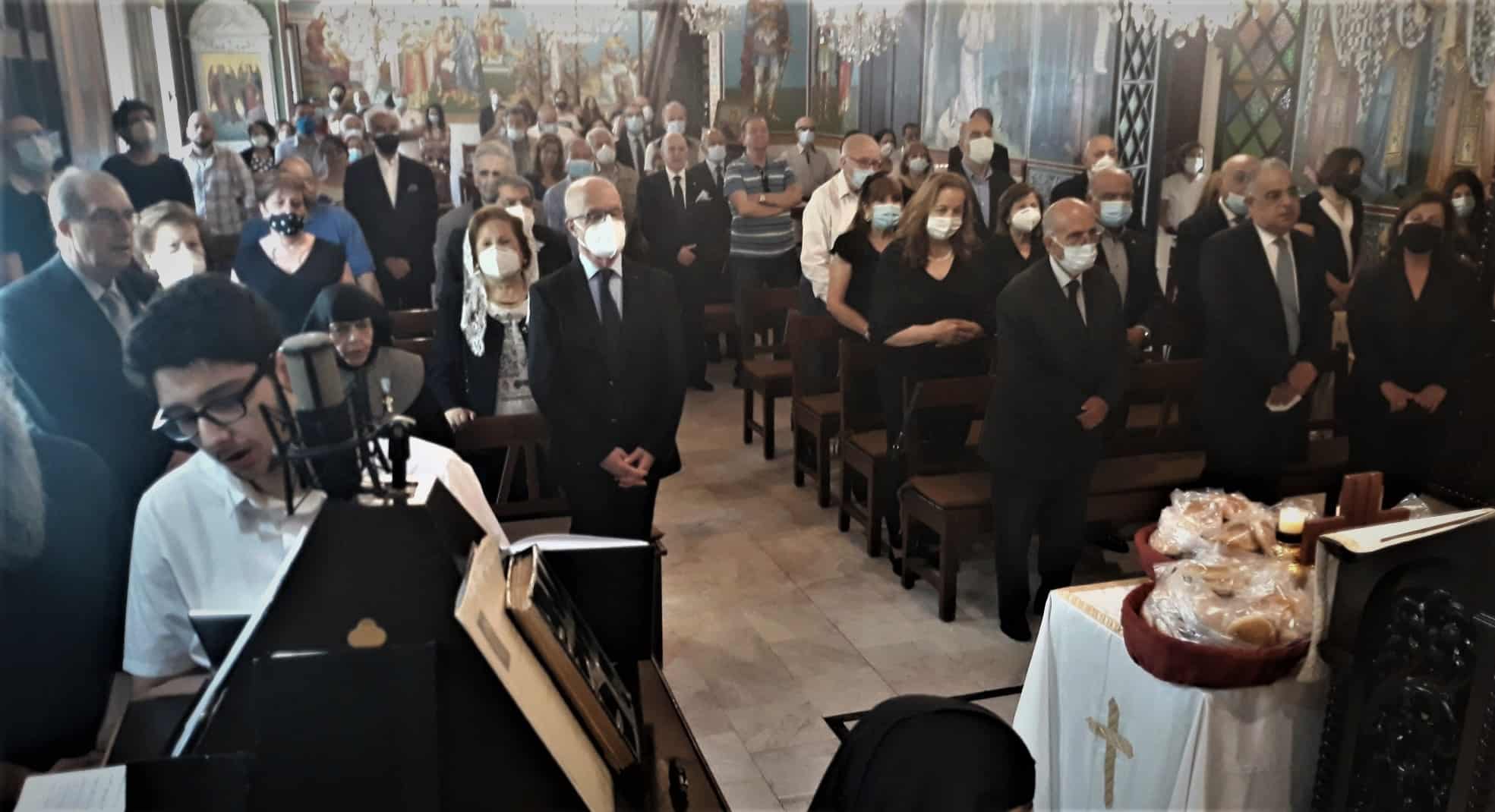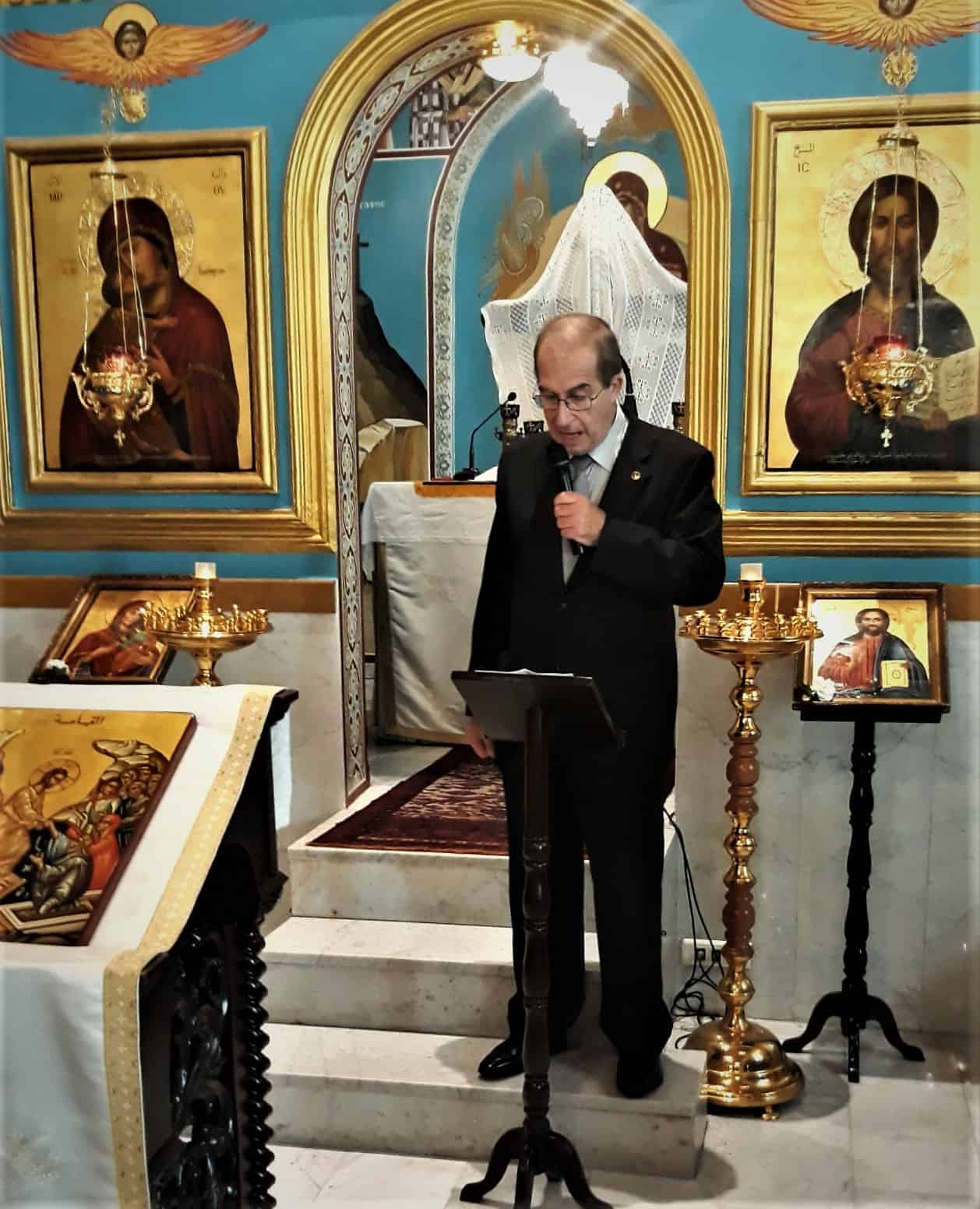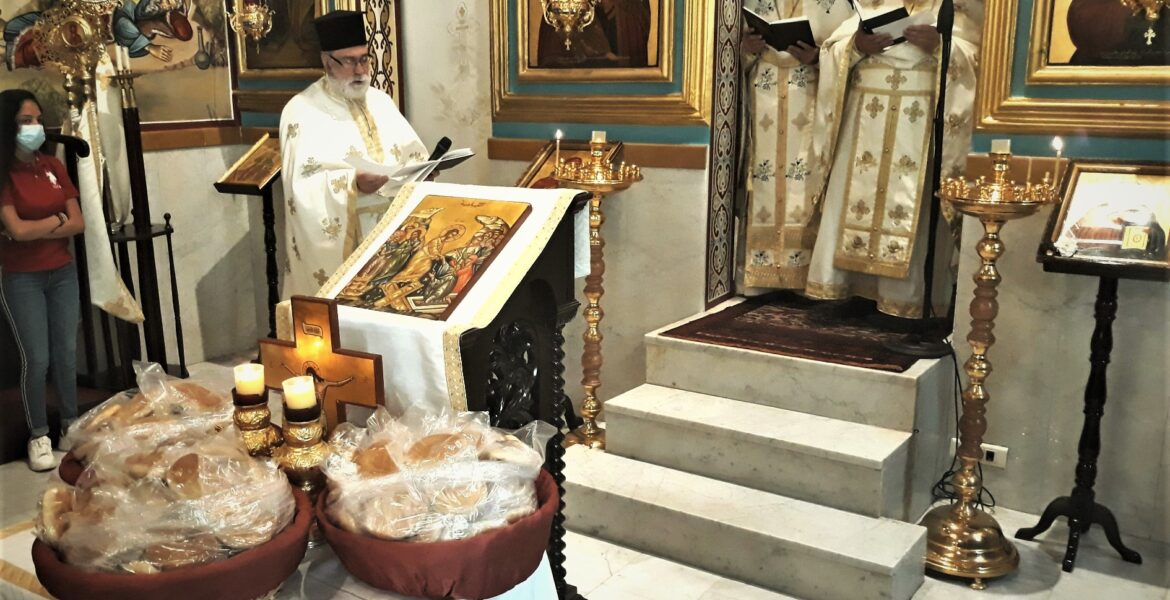On the morning of May 30 in St. Catherine’s Orthodox Church in Beirut, the Romaïan Cultural Society commemorated with sorrow the conquest of Constantinople, the Romaïan (Byzantine) capital, by the Ottoman Turks on Tuesday, May 29, 1453.
Members of the Society and their friends participated in the Divine Liturgy that was held in the church to commemorate the Fall of Constantinople.

A Trisagion Service took place for the repose of the souls of the last Romaïan Emperor Constantine XI, the officials of his state, the soldiers and citizens of Constantinople, and of the bishops, priests, deacons, monks and nuns of the imperial city.
The Divine Liturgy was headed by Archimandrite Seraphim (Bardawil), assisted by Archimandrite Stephanos (Abdelnour) and Father Anthony (Axarlis).
More than a hundred people gathered to commemorate the Fall of Constantinople.
It was led by the president of the Romaïan Cultural Society professor Negib Elias Geahchan, and the former Governors of Beirut Nicolas Saba and Ziad Shebib, and other honorary members of the association.

At the end of the Liturgy, the President of the Romaïan Cultural Society, Professor Geahchan, gave a speech commemorating the Fall of Constantiople and thanked the participants.
He stated: “In three days (29, 30 and 31 May 1453), the invading soldiers entered the City, which, in the past, was the largest human agglomeration, including more than a million citizens, was the capital of the Chalcedonian Orthodox Christianity, the center of the Romaïan culture, the melting pot of several peoples and civilizations, and the cradle of philosophers, writers, artists and scholars. In just three days, was erased a long history of 1,123 years encompassing the heritage of the ancient Greek, Roman and Mediterranean civilizations, and making the glory of Christendom, declaring its Credo and its dogmas, excelling in the arts of icon painting and religious music, and establishing the civil and religious laws that were perpetrated all over Europe and the modern world.
“Constantinople introduced the Christian values and commandments in legislations and social bylaws and practice.
“Thousands of Christians lost their lives in those few days and many other thousands were taken as prisoners and slaves.
“The massacre did not end until three days later when Mohammed, the Ottoman Sultan, entered the city and went directly to Agia Sophia cathedral, destroying every Christian symbol within it, removing the crosses, and transforming it into an Islamic mosque.
“Today we recall this memory, and we pray for the repose of the souls of those martyrs who fell in the great capital, asking, for them, divine mercy and forgiveness of sins.”
The Romaïan Cultural Society is a private Lebanese institution that was established in 2014 to revive the Romaïan cultural heritage in Lebanon and the Levant, to broadcast and disseminate it amongst the remaining Levantine Romaïans, to familiarize all the Lebanese population with it, to enhance the sense of belonging, and to communicate and exchange with all the Romaïan peoples of the PanHellenic world, the Mediterranean basin, Anatolia and Eastern Europe.
The activities of this association consist of seminars, educational lectures, exploratory trips to historical and religious sites, activities on social media and scientific conferences.
The association has honored several deceased and alive creators and innovators who contributed to the steadfastness of the Romaïan peoples in their land and the wide development of human culture.
Professor Negib Elias Geahchan is President of the Romaïan Cultural Society.
READ MORE: The Greeks of Constantinople: From hundreds of thousands, there are now only 1,800 left.


